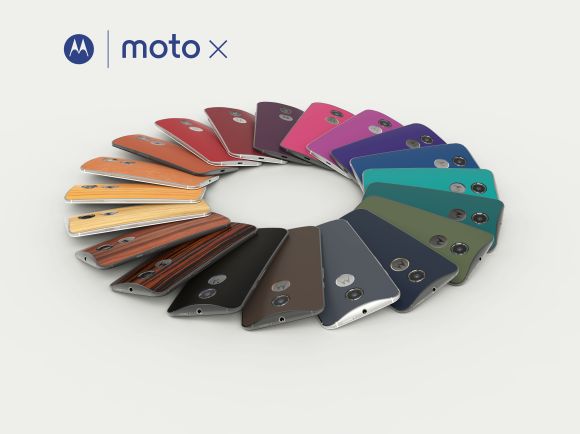The other Motorola smartphone that got an update today is the flagship Moto X featuring uprated specs and improved finish but is it enough to make us want to tell you to get one? Not really.
On the skin, the new Moto X gets an improved finish and an aluminum frame to give it a more premium feel. There are a number of covers to choose from but as you already know, like the old Moto X, these will not be available in Malaysia.
Specs wise, the new Moto X gets a quad-core Snapdragon 801 chipset over the dated 1.7GHz dual-core Snapdragon S4 Pro MSM8960, but the 2GB RAM is the same as does the 16 or 32GB of on board storage. Like the old Moto X, the new one doesn’t have a microSD card slot, which is unfortunate considering Motorola made it available on the updated Moto G.
At 5.2-inch the Gorilla Glass display on the new Moto X is better and technically better with full HD resolution and a more dense 423ppi versus 312ppi in the 4.7-inch 720p screen on the old Moto X. The camera has also been bumped up with a 13MP sensor that shoots 4K video at the back (versus 10MP camera, 1080p video in the old one) while the 2MP front shooter remains the same. Speaking of cameras, the camera app on the new Moto X is pretty cool. To start the camera while the phone is in sleep mode, you just need to flick the wrist twice while holding the phone. There’s also a best shot mode to eliminate blur and closed eyelids. The dual-LED ring flash is unique as well. Battery capacity has also been upped slightly to 2,300mAh from 2,200mAh before and the device runs stock Android 4.4.4 (KitKat) and, that’s pretty much it.
As a flagship smartphone, can the new Moto X compete with the Xperia Z3 and the Note 4? Like we said, not really.







